[Music: Day Game]
I’ve been feeling really sentimental about Little Busters lately, watching the final episodes of Refrain unfold, so it seems like a perfect time to share what Little Busters means to me. You can consider this the conclusion to my long-forgotten Penultimate Reflection. It’s way overdue, but I hope you can appreciate what I have to share nonetheless! I’ll be focusing on the Little Busters VN here, not so much the Anime. Also, I’m not done with the Rewrite reflections yet; hopefully I can have my thoughts on Akane’s route with you guys soon!
Spoiler Warning for the entirety of the vanilla Little Busters. I haven’t read EX yet, but if you haven’t finished the game or are still watching the Anime, don’t read this until you’re done.
First, some history. I first discovered Little Busters after I had finished watching Clannad and discovered my love of Key. By this point Little Busters was still a relatively new Visual Novel, and it would still be little while before I made the plunge and tried it out. Translation started after some time by team Fluffy, and patches were generally released route by route, so I was able to follow the series in portions, much like an Anime viewer would. I ended up buying the game from J-List for about $120, probably the most money I’ve ever paid for a game, but it was worth every cent. It may have been frustrating at times having to wait for each route to be translated, but it extended the life of the story for me, and built up a sort of community centred around hype for each upcoming release. I’d get on the Fluffy IRC and contribute to the #LittleBusters hashtag while I waited out the months, connecting with people who shared my excitement. I made a lot of connections over the net through this. I remember someone a few years back mentioned how “If you find someone loves Little Busters, you know they’re a nice person”. Not to steal his words, but I felt much the same way. Much like my love of the MOTHER series, back then if you met someone who loved Little Busters like you did, you already had an immediate connection with that person. It was really easy to make friends based on that common ground. There weren’t very many of us back then compared to how big it’s getting now with the Anime, so we became quite a tight-knit community. Even today, I still keep in touch with a few people I met through the game, and I continue to make more friends through Twitter each day. Little Busters helped us become a big family.
Art by Shrie
But I haven’t begun to speak about Little Busters itself! I’ve already spoken about the common route in my Penultimate Reflection two years ago (has it been that long?), so I won’t dwell on the common route too much. But I will say that even though I finished Little Busters long ago, I still go back to the batting practice even today. Whenever I’m feeling down or stressed, I boot up Little Busters and skip to the batting practice to hit a few balls around. It never fails to put a smile on my face, and the worries of life fade away. The batting practice, much like the story itself, is therapeutic to me. Somehow, reading the story and watching the characters interact helps remind me of who I am and what’s important.
So then, time to offer my thoughts on the heroine routes, starting with Komari. I get that Komari isn’t a very popular character among the English-speaking fans, but she was one of my favourite girls throughout the story. During the common route, I always appreciated listening to her beliefs; I particularly identify with her spiral of happiness theory. It’s simple and cute, but it holds an innate truth to it that I hold dear. Komari herself is the personification of kindness and joy, sweet to the core. So when her route came around, it came as a huge shock to me to see her so broken after witnessing a death. Komari’s route revolves around her aversion to death and fear of losing things. Her super happy and optimistic identity is a fragile shell which when destroyed, reveals an infant afraid of the world. Komari was unable to accept sad things, and when confronted with what she fears, she runs away until she forgets about it. Partly due to her brother wanting to keep her smile alive, she was unable to grow up. So Riki, challenging what her brother had put in her head, had to force her to accept the harsh reality and find happiness in it. There is a lot of sadness in the world, but we can still find many good things and be happy. I feel like, after the ordeal, Komari became so much of a deeper and stronger character, being able to find happiness and bring happiness to others while still accepting the darkness of the world. It’s really inspiring. The route draws many parallels to the core of the story shown in Refrain, and it goes to show that the darkness which surrounds our everyday lives never really goes away. We’ll keep fighting against it, in hopes that we can continue to become stronger and face whatever adversity is thrown at us. It’s never easy, but those who can pull through and keep a smile are the people we can really admire.
[Music: Approaching Light]
Mio’s route is probably my favourite Key heroine route of all-time, so I may be a bit biased, but I really loved it. She’s definitely one of the most deep-minded Key heroines I’ve encountered. There are so many different ways you can interpret her route, but what I got out of it was that Mio was unsatisfied with her existence, and loathed herself for losing Midori. The whole idea of having an imaginary friend so real that even when erased through clinical intervention, she could still come to remember her, and end up loathing herself for existing instead of Midori. That’s a pretty original plot. The plot is heavily rooted in Key Magic, but it makes a lot of sense when you think of Mio as having dissociative identity disorder, with Midori is her alter; the representation of her ideal self, and her friend. When Midori was erased, she was only left with her undesired self, and wanted to disappear and have Midori take her place. This may not have been possible in the real world, but in the artificial world she was able to have her wish granted, and finally be at peace. That is, until Riki found her and invited her to join the Little Busters. Riki empathised with her, seeing his old self in her who thought nothing of her existence, and wanted to help her find some joy and appreciation of living. He was able to waver her determination, but in the end she leaves the world and lets Midori take her place as she originally planned. Unlike Mio, Midori is loved by everyone, and as the player you have to choose whether to continue holding onto your memory of Mio or accept her wish and allow Midori to exist. As the player, it was very confronting to see Riki’s memories fade. Having spent all that time with Midori, and then seeing that CG of Mio with the glasses, it really fucks with your head, like you’re really starting to forget her just as Riki was. That was my experience, at least. As a psychology student, I loved they angle they took with memories here, showing how fragile and susceptible to interference they are. But upon discovering Mio’s poem, Riki was finally able to remember who she was with clarity, and decided to go and get her back with Midori’s approval. What follows is one of the most emotional scenes of the VN for me. Riki proclaims to Mio that she can discover herself and her happiness through being with others, and through that revelation she is finally able to integrate with her other self, and accept the kindness of others while still maintaining her unique persona. The route is all about a search for identity and personal meaning, it’s one that I really empathise with. I’m often questioning my own identity and how other people fit into that, but I agree that you can only truly discover yourself through spending time with others, rather than becoming a bird drifting through an endless expanse of blue. Isolation means you’ll remain as you are forever, but you’ll never truly understand yourself if you remain alone. Only by being with people you love can you truly understand who you are, who you want to be, and what you love. That’s what I took from her route.
Art by shizuki sayaka
[Music: Slow Curve]
Haruka’s route is one I didn’t appreciate as much as the others at first, probably because I was rushing through it, but I’ve really come to love her route after having watched the Anime adaptation. Riki falls for the troublemaker, and discovers how insecure she is. It’s usually the case in real life that delinquent types are full of insecurities, so I’m pleased to see this approach used here. Through her upbringing and relationship with Kanata, she develops into a person who is doesn’t believe in kindness. When she first gets to know Riki and he helps her out, she keeps questioning him, unable to believe that he sincerely wants to help and, moreover, believes she is a good person. All her life she was raised as a problem child; a good-for-nothing who brought unhappiness to everyone, so it must’ve been difficult for her to think of herself as having worth. Despite her genki image, Haruka is filled with a lot of deep hatred for her family, and this comes out when her rage for Kanata explodes and she wishes Kanata were dead. Bringing to mind the common route scene with Mio where Riki has to decide whether to suspect or trust people, Riki has to convince Haruka that there is good and kindness in the world. In the end, even after all Kanata did to her, Haruka is forced to accept that perhaps Kanata isn’t as evil as she appears. Confronted by Haruka and Riki for the truth, Kanata confesses everything, and Haruka forgives her. In the beginning, Kanata is unable to accept her forgiveness, but eventually she opens up her heart and the two unite to rise up against their family’s ill wishes. In the end, Haruka is finally able to accept that there are good people in the world, and her entire world view is shifted thanks to Riki’s support. This one really hits home with how it reflects real life. In Little Busters, Haruka and Kanata’s parents weren’t offered any chance at redemption, and perhaps there was no chance for that to happen. Certainly, people do evil things every day. But I, like Riki, believe there is just as much good to be found in the world as bad. And more importantly, choosing to suspect rather than believe is something that can turn you into a bitter, hate-filled person, even if you’re often right. It’s tough to know what is the right thing to do, but there are surely times when you must believe in people, even without knowing whether your faith will be rewarded or not. It’s a very heavy message that I haven’t been able to truly appreciate until recently. For many people, trusting others is difficult, but there are times when we must place our faith in the good in people’s hearts. That’s what I believe.
Art by NorthAbyssor
Kud’s route was one of my favourites playing through the game. Her character design definitely panders to the lolicons, and the enormous fandom she has annoys me sometimes, but her route was a gem I wasn’t expecting at all. Things take a dark twist when news that Kud’s homeland of Tevua has erupted into civil war after the failed launch of a space craft killed many people reaches the Little Busters. It hit me hard to read such a grim and politically-tinged story from a Key game. This isn’t just a girl overcoming insecurities; it’s a catastrophe on a national level. In the Visual Novel, this was definitely one of the more romance-driven heroine routes. Riki and Kud develop their relationship further and further, and just when things are looking great, Kud is left to decide whether or not to visit her mother in Tevua. As the player, it’s up to Riki to decide whether to let Kud go knowing that it’s very dangerous and she may never return, or tell her to stay with the Little Busters and stay safe. To be honest, I told her to stay the first time, and it ended with her mother being publicly executed on television, and Kud remaining scarred after the ordeal. Ultimately, Kud must go to Tevua to see her parents, but she ends up getting captured by extremists who wish to sacrifice her to God as a desperate attempt to cause a miracle to save their dying nation. It’s heartbreaking to let her go and watching the consequences unfold. Then things get really metaphysical as Riki’s consciousness is able to contact her in a dream. At first Kud thinks she’s losing her mind right before death, and talks to herself about her regrets. Riki and the player don’t really understand what she’s talking about here, because she’s referring to the secret of the world which at this point has yet to be revealed. Simply knowing the secret of the world puts a whole new spin on this entire route, but I’ll get to that after. Even though I didn’t fully understand what was going on, one thing was clear: the bond they shared was powerful. From the body painting Riki and Kud performed, they were connected through distant space, and Riki was able to reach her and save her through their bond. He helped Kud remind herself of how loved she was, and how she could be a good gear without dying there. Riki teleports the machine parts to Kud’s hand, and she uses them to break free from her prison and return home. So, what’s really going on here? Let’s return to this route having finished Refrain. When Kud first learns of the launch failure in Tevua, she breaks into tears, apologising to Riki and telling him that she “remembered it”. As she explains later in the dungeon, she remembered what happened in the real world, including the execution of her parents she saw on TV when she decided not to go to Tevua and the bus accident that would later happen to her and all of the Little Busters. Even with this knowledge, she makes the decision to travel to Tevua and experience the despair for herself. When she goes, she replaces her parents as the sacrifice, and embraces her punishment as “what I deserve”. She’s trying to end her regrets by going and enduring the punishment waiting for her, to be useful to some purpose and atone for her sins. But Riki doesn’t accept that, and gives her the machine parts she desperately wanted Riki to throw away. These parts once reminded Kud of her mother’s death which she wanted to move on from, but looking at them now she is reminded of her mother’s wish to be a good gear to the world. Realising the error of her ways, she uses the gear to escape from her self-constructed prison and return to the Little Busters to complete her final mission, and be a good gear for her friends. At least, this is my explanation. I’ve heard numerous theories floating around, so if you disagree feel free to let me hear your interpretation of her route. It’s definitely not an easy one to figure out! This, like Kurugaya’s route, is definitely one that should be experienced twice. The first time you get the all the emotions, and the second time you can try and reason it out. As for the messages you could get out of it, there’s the simple love conquers all message from Riki’s love for Kud saving her from her prison. Or maybe you could say that one shouldn’t focus too hard on making up for the past, lest you lose your future. This is one you’re free to interpret as you see fit.
Art by crow a
[Music: Boys Don’t Cry – daydream Remix -]
And then we have Kurugaya’s route, which is even more romance-focused than Kud’s route. Here, Kurugaya’s regret was that she was unable to form human emotions. Wanting to feel something, she gets involved with the Little Busters and forms a relationship with Riki. The premise of this route is super simple, really. Riki forms a relationship with Kurugaya, Riki gets stronger, the end. Or at least, that’s how it should’ve panned out, but this route goes into overtime. Kurugaya isn’t content with letting go of her regrets; she wants to continue spending time with Riki. And when June 20 hits, the world is meant to end. But Kurugaya’s wish to be with Riki (and possibly Riki’s wish as well) prevents the world from ending, and we end up with a groundhog day effect. After the days keep repeating, people’s memories end up getting messed up, and the world starts physically breaking down; it even starts snowing when it was never meant to. To Riki and the player, there’s no way of knowing what the hell is going on so it can be a really confusing, if not thought-provoking ride. The point of this route is mainly to set up the secret of the world, but it’s also an interesting insight into Kurugaya’s thoughts and wishes. She selfishly wishes to be with Riki for as long as she can, even defying nature itself to do so. It’s pretty sad, but the only way Riki can move forward is by letting go of Kurugaya, and she knows this as well. I really loved how the Anime used this a prologue to Refrain, very crafty. This route, unlike the others, ends unfortunately for Kurugaya because she had to part with Riki even though she didn’t want to. When you consider that she’s about to die from the accident, it makes it even more depressing to think about. But, Kurugaya fans are happy to know that there’s a secret ending for people who’ve finished the game. If you go back to the end of her route, a bonus scene opens at the end which shows Kurugaya confessing her love to Riki in what appears to be the real world. So in the end, Kurugaya was able to grant her wish after all. I’m getting all emotional thinking of all the implications of this route. This is a route which may not spark much imagination while you’re reading it, but it really sticks with you after you eventually realise what it all means.
Art by rin2008
Having completed each of the five heroine routes, Riki and Rin have both grown stronger with each new reset, shown through changes in the script of the common route each time you start a new game and even their battle stats getting higher and higher. When a heroine’s route is completed, you won’t be able to access it again, except for Komari’s. This is because all of the girls have left the world except for her. On the final playthrough of the common route, a lot more scenes will be unlocked, Riki will be strong enough to win the battle rankings and defeat Mask the Saito (having finally surpassed Kyousuke’s strength), and together with Rin you’ll be able to win the baseball match much easier. It’s all of the little amazing ways in which Little Busters ingeniously utilises the interactive medium to tell the story in ways you just can’t get with Anime. It’s one of the big reasons I recommend the VN to people over the Anime; as good an adaptation it turned out to be, you just don’t get quite the same experience. After having helped all the girls through their problems, it’s finally time for Riki and Rin to learn the secret of the world and move forward. The final task Rin is given is to volunteer to show the people from their sister school around the campus. In Rin1, you black out shortly after this, but this time having completed all of the routes, you’re strong enough to face what comes next. Rin is sent to the sister school but is unable to handle it, frequently texting Riki about how she can’t handle it. Riki confronts Kyousuke, insisting that forcing Rin through this is wrong, but Kyousuke desperately tries to appeal to him to wait it out a little longer. The Little Busters are falling apart, and Riki is grieving, worried about Rin and growing more and more frustrated with Kyousuke. Even Kengo, who understands what Kyousuke is trying to accomplish, refuses to accept his methods and together with Riki, they challenge Kyousuke to a game of baseball. Kengo vows that no matter what happens, he’ll fight to keep the Little Busters alive forever, and Riki finds comfort in his words. The match against Kyousuke and Masato commences, pitting the former best friends against each other in a fight to determine the fate of the Little Busters. Things aren’t looking good for Riki and Kengo, and it all comes down to one swing. Riki is getting really worried that he’s about to lose everything for good, but Kengo calms him down, asking Riki to trust him. Riki trusts his dear friend and unrivalled athlete to save him from this situation, and Riki performs the perfect pitch, only for Kengo to swing and miss. It’s later revealed that Kyousuke warped reality to make Koshiki, the girl who Kengo lost to suicide in the real world appear in the corner of his vision, distracting him and causing him to miss. Kengo assaults Kyousuke in a fit of rage, but is unable to speak out against Kyousuke’s methods, lest Riki learn about the secret of the world too soon. “Called game.” Kyousuke proclaims as thunder booms; the Little Busters are no more. Kengo tries to dissuade Riki from running away with Rin, but unaware of the consequences, Riki escapes with Rin to the countryside, seeking refuge in Rin’s grandfather’s abandoned house. Riki spends the days trying desperately to support himself and Rin, but eventually they are discovered by the police and removed from the home. In darkness, Rin is scarred as the event resembles a trauma from her childhood, and is separated from Riki. When Riki returns to school without Rin, he regresses to how he felt when he lost his parents as a child. He remembered that “living meant losing”, and he regretted even being alive at all. The credits roll as ‘regret’ plays.
Art by soranagi
The disembodied voice from the end of Rin1 returns again after the credits end, and asks you “What are you going to do now?” and you’re presented with two choices. Both return you to the main menu, but with one difference. “Become stronger” or “Run away”. Choosing the former returns you to the main menu, where New Game is replaced by “Refrain”. Clicking on it greets you with a haunting image of the bus crash, before the game starts off as normal with Kyousuke returning and Masato going to fight Kengo. The similarities end here though, and since Kyousuke isn’t around to umpire the fight Kengo and Masato go a bit too far, with Riki unable to stop them from seriously hurting each other. It turns out that from the result of the last loop, Rin remained scarred from the trauma she faced, and Kyousuke grieved alone over the consequences of his actions. Without Kyousuke around, the Little Busters was a shell of it’s former glory. With the feelings of his past lives guiding him, Riki asks his friends if they want to play baseball, but Kengo refuses, not wanting Riki to repeat Kyousuke’s mistakes. Masato sees how far Riki has come and decides not to interfere any more, leaving it to Riki to reach the truth himself. Riki ponders what he has to do to solve the secret of the world, and believes that he needs to retrace Kyousuke’s steps in the past and reform the Little Busters as their new leader. Riki starts with Masato, who through Kyousuke’s manipulation has his perception altered and loses his mind, seeing everybody around him as clones of himself. Regressing to his younger self, he becomes determined to prove his identity as the real Masato by showing the fakes that he is the strongest, and goes beating them up indiscriminately. Riki and Rin spring into action and set up a series of traps to wear him down, but in the end it comes down to a plain old fistfight, where Riki and Rin combine their strength to deal a finishing blow to Masato. This reawakens him to reality, and he decides to follow Riki to the end. What I loved about this part of the VN was how it kept shifting perspectives between characters, getting their thoughts and feelings on different events. You even got to see Riki with a sprite and voice through the eyes of his friends; it was different to anything else in the VN up to that point. I really did empathise with Masato a lot, with how the story went into the psychology of what society calls an ‘idiot’, seeing people making fun of him for the way he thinks and acts. As a child all he could do was fight to prove his identity, but in the end Kyousuke convinced him that being an idiot is fine as long as you have friends which love you for who you are. I’m so happy that they gave an otherwise comic relief character such an insightful episode.
Next was Kengo, who it turns out was lying about his broken arm all along. In his childhood, he was raised to achieve victory in all of his endeavours, and was bound to a that lifestyle. When Kyousuke played some tricks to defeat his father at kendo, Kengo was finally free of his burden and could live a life of fun and enjoyment with the Little Busters. It’s suggested that in the real world Kengo gradually returned to his victory-driven lifestyle, but that in the artificial world he was able to relive the fun days of being with the Little Busters once he faked his injury, explaining the sudden 180 of his personality. So now in Refrain, Riki and Rin challenge him to a baseball match to get him to join the Little Busters. But Kengo is determined to win, because he isn’t ready to move forward and lose everything. Just like he opposed Kyousuke in Rin’s route, he opposes Riki because he doesn’t believe Riki and Rin are strong enough to face the tragedy. He vows that if he wins the baseball game, Riki won’t have to worry any more, and they can go back to having fun forever. But despite his strength and determination, Riki and Rin prove they are strong enough to defeat him, and he falls to the ground weeping tears of regret. They really are stronger now, he realises, and grieves over all the fun times he’s about to lose. But nonetheless, he acknowledges their strength, and promises to follow Riki from then on.
And last was Kyousuke. Kyousuke’s episode took us on a journey through his memories, revealing how he designed all of the trials to make Riki and Rin stronger, even it it made him appear as a villain at times. It took us through his despair after failing to make Rin stronger, and his mission to plug the gas leak with his body in the real world to grant Riki and Rin the time they needed to escape. This is definitely a part of the game that hits hardest the first time you read it, realizing how everything from the very beginning ties into Refrain, and that Kyousuke isn’t a villain after all. This part of the story gives the reader a chance to piece together all the fragments of the puzzle before the big reveal in Episode: Little Busters. It’s the calm before the storm, and it was really satisfying to see my reasoning bear fruit here.
Art by zakang
[Music: Faraway]
And then, Episode: Little Busters breaks down all the walls by finally revealing everything, laying everyone’s emotions bare. The end of the world is about to happen, and the Little Busters spend their final moments playing baseball; a fitting end for the group. Masato is the first to leave, and he manages to keep his smile the whole way, telling Riki how happy he was to have him as his room-mate. Riki returns his love, and Masato disappears with a smile while throwing the ball to him. Riki drops the baseball bat in shock and disbelief, questioning Kyousuke, who affirms him that this is where his strength and determination lead him. Riki doesn’t want to accept it, but he keeps smiling for Rin and continues playing baseball. Kengo is the next to go, who questions Kyousuke whether he was happy or not with his life. Kengo breaks down, screaming out how happy the Little Busters made him, and that he could never regret the time they spent together. Wiping away his tears, he grasps Riki’s hand one last time, as a symbol of friendship. “Little Busters are eternal.” he says right before passing away. Riki hits a home run, and Kyousuke is in awe of his and Rin’s strength, and walks away before Riki begs him to stay a little longer, telling him how much he loves Kyousuke. Unable to hold it back any longer, tears stream down Kyousuke’s face as the music reaches a crescendo and he tells Riki how sad he is at the cruelty of the world, and how he loves Riki and Rin so much more. This is where it hits you just how emotional Little Busters is. These tears were well earned after all this time spent together and then having to part forever. Riki wishes he could do something to change it, but Kyousuke urges him forward, screaming that they can’t hesitate any longer. Midorikawa’s voice acting here breaks my heart every time I hear it. Riki takes Rin’s hard and runs away from the collapsing world as Kyousuke remains to watch the world fade away, and him with it. Holding back his tears, Riki says to himself, “Goodbye Kyousuke. Goodbye Little Busters.”
But, that wasn’t it for me, my emotions weren’t spent yet. I held back my tears a little longer. Riki and Rin awaken to the scene of destruction from their nightmares, and the player is given two choices. Either he try to save his friends and die from a narcolepsy attack, or he flee to safety with Rin. Rin asks what you’re doing, and Riki replies that they’re going to live. Determined not to let everyone’s efforts go to waste, Riki stumbles as far as he can before losing consciousness. As you do, the perspective shifts to Rin who has returned to the artificial world for one last encounter. She dashes around the school frantically searching for any sign of the friends she had forgotten, until she finally finds Komari on the rooftop. Rin doesn’t want to accept the harsh reality, but Komari tries her best to continue smiling despite everything, just as Riki once taught her to. Keeping the promise she made to Rin in the past, she gives Rin one of her stars, and wishes for Rin to keep smiling forever. They part, and Riki awakens in a hospital bed next to Rin, where he vows to stay by Rin’s side and find happiness with her. Then the credits roll as song for friends plays.
Art by yuzuki
This was the moment which broke me. Playing the game late at night in my room, I couldn’t help but cry uncontrollably. The only emotion that I can compare it to is the realisation sinking in that I’d just lost someone I loved; it was that powerful. Each of these characters I’d invested all of these hours of my life into getting to know and love, these characters which I gained so much from knowing, all suddenly dying… I was crying like a child throughout the whole credit roll, unable to prevent moans from escaping my throat as it just got worse and worse as it sunk in. Even Clannad never hit me this hard. This marked the first time I ever truly cried at a work of fiction, and it’s a memory that’s engraved in my heart, something which continues to remind me that Little Busters isn’t just any story, and that it’s special. And it makes me feel happy to know there are so many people out there who feel the same way.
[Music: A World Is Born]
But, then the credit roll ends, and you’re presented with a question from the disembodied voice. “Is it enough?” This caught me so off guard because I was convinced this was the end, and I was almost able to accept it. But this question, it empowers you to choose your own ending; it was such a huge responsibility thrust on me. If you answer yes, then the story ends and Riki and Rin live on together. But if you’re like me, you’ll have probably answered no. Given that I’d invested so much of my heart in these characters, if there was any chance of a happy ending for them, I’d take it. Answering no, Kyousuke questions why, insisting that you’ll probably be happy, but Riki responds that “nobody else is there with us.” Kyousuke then says that even if you try to save everyone, Rin would be put in danger, to which Rin responds “I’ll get stronger too”. Perhaps, all this time we’d spent getting stronger, preparing for this, would enable us to do something nobody could have expected. With that remark by Rin, Kyousuke submits, and leaves it to you. Riki and Rin go, and create a new world where they can be strong enough to change things. Rin returns to the artificial world and, vowing to grant Komari’s wish, stops crying and moves forward. Riki takes a journey backwards through time, trying to pinpoint the moment in his past which caused him to become weak. He identified it as his parents death, which caused his body to develop narcolepsy as a mechanism run away from scary and sad things, just like Komari used to. Riki goes even further back to before he was born, and realises how warm and comfortable it is in a world where you don’t exist, reminding me of the endless blue Mio wished for. But then suddenly, the feelings he had for his friends in the distant future return to him, and he realises how happy he was to have known them. It’s then that he has a revelation that, despite all of the sadness that would await him in the future, he still wanted to be born. To him, the reality that living meant losing was once too much to bear, but now he can accept that even though we lose, it doesn’t mean we shouldn’t live. Riki realises that the experience of spending time with people is much more important than the loss, and he’s suddenly not afraid any more. With this new feeling, he returns to be born into a new world, the “Real World” where he’s no longer afraid. He awakens back to the scene of the bus crash, being overwhelmed with fear as he stares at the scene and the screen beats red with his heartbeat for effect, and it’s finally time for action. Cured of his narcolepsy, you decide to calm down and analyse the situation before doing anything reckless. From the vision you saw in Episode: Kyousuke, you’re able to work together with Rin and make the right choices with the time you have. Carrying people one by one out on a stretcher while Rin and some of the classmates treat the injured, you eventually discover Kyousuke’s body on the rear of the bus blocking a hole which gasoline was flowing out of. Resisting your urge to save him to make his sacrifice worthwhile, you rescue everyone else before finally returning to him. Carrying him with Rin while your body is about to give in, you run away from the growing inferno behind you before leaping to the ground as it explodes, protecting Rin and Kyousuke with your body as your hair is singed by the flames of the explosion. The scene fades out as the disembodied voice of Kyousuke thanks you for creating a miracle that nobody thought possible. With that, you’ve successfully averted a tragedy and saved the Little Busters.
The final moments of the VN take place 6 months after the accident, where the memory of the artificial world is an almost forgotten dream to everyone now. But even though he can’t remember what happened, he knows he became much stronger as a result, strong enough to save everyone. Kengo returns to school from the hospital, and everyone is patiently waiting for their leader Kyousuke to return. In the meantime, Riki took up the position of leader well, spending each day doing all of the fun things they got to do in the artificial world like fighting with newspaper swords, playing kick the can, doing puppet shows and trials of courage. The Little Busters were truly saved, and everything was back to the way things should be, except for one thing. Then, as if on cue, Kyousuke vaults into the classroom from the floor above. Riki thinks that he mustn’t have fully recovered yet, but he says he’s fine as he climbs the rope with one arm, defying common sense. As his first act upon returning to school, he invites all of the Little Busters out on the field trip they never got; this time to the ocean. They leap over the fence and get in the van Kyousuke rented, and depart for a future of fun adventures with their friends.
[Music: Little Busters! -Little Jumper ver.-]
So that’s Little Busters. I haven’t read EX yet, so I may come back to reflect on that once I do, but for now this is the end. The ending may have been a bit of a cheesy twist for some people’s tastes, but I couldn’t have been happier with how it ended. I believe this is the kind of scene the Little Busters deserve after overcoming all of their trials; anything else wouldn’t have felt right. Everyone is a bit stronger and wiser after the hardship, but everyone can continue living happy together. It’s okay, you can let it out now, those tears of relief you weren’t sure were okay to let out or not. We got our happy end, and that’s okay! Nobody can trample on these feelings. For all the moments we were praying for the safety of our dear friends, we were rewarded with this final epilogue.
So, just what is the Little Busters? What do you think it is? To me, it’s a story about friendship. It’s a story about discovering yourself through others, and learning to find happiness even when surrounded by overwhelming darkness. It’s a story of having faith in others and in yourself, even if you have doubts sometimes. It’s a story of moving on from the past to look to the future, and about growing stronger in the face of fear and adversity. And it’s also a story about fighting for what you love, no matter how hopeless things may seem. And of course, it’s a simple story of having fun with friends. You can take anything you want from this story, but I truly believe it’s touched the hearts of many people and changed their lives for the better. For me, I would call it Jun Maeda’s greatest work, and the most emotional story I’ve ever read. Thinking of the story and it’s characters continues to empower me, guide my decisions in life, and remind me of who I am. It cheers me up on rainy days, and whenever I watch it or discuss it with friends, nothing makes me happier. I hope to continue helping more people experience the story for themselves, and look forward to meeting more people who share my love. The Little Busters are eternal!
Art by hanagosui
In a way, the Little Busters are my home, and I carry them with me wherever I go.

![[Refrain Subs] Little Busters! ~Refrain~ - 06 (720p Hi10P) [659124C4].mkv_snapshot_05.39_[2013.12.20_18.05.46]](https://kakeracomplex.files.wordpress.com/2013/12/refrain-subs-little-busters-refrain-06-720p-hi10p-659124c4-mkv_snapshot_05-39_2013-12-20_18-05-46.jpg?w=640&h=360)
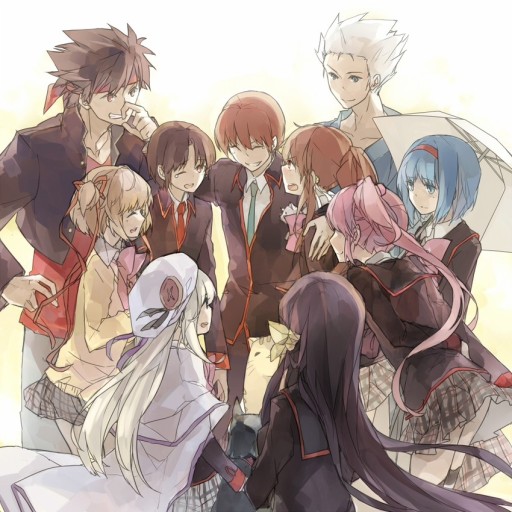
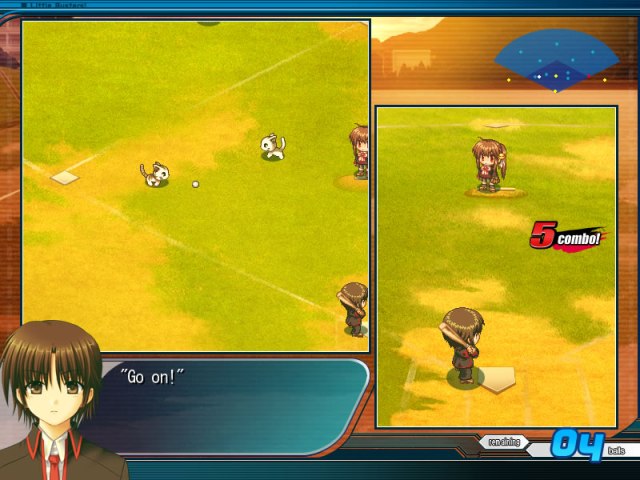
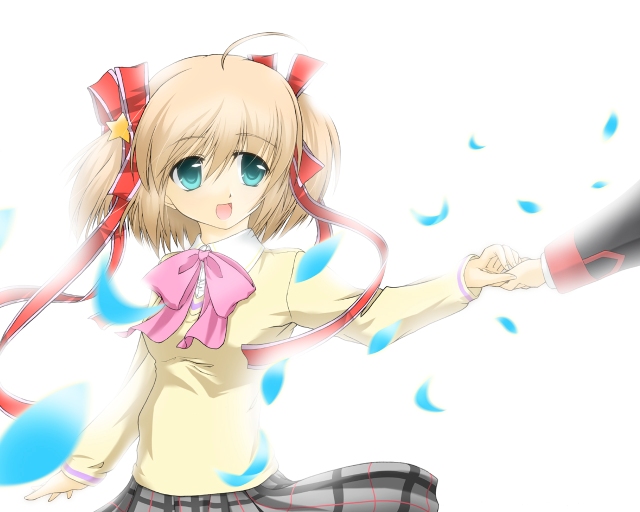
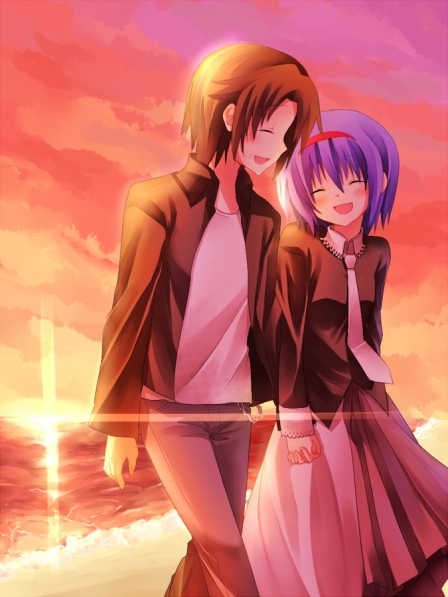
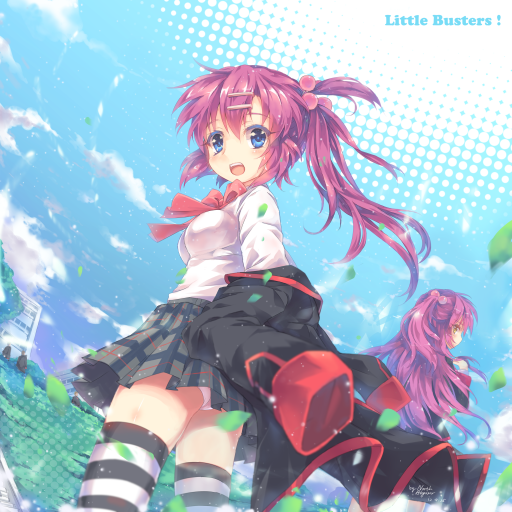
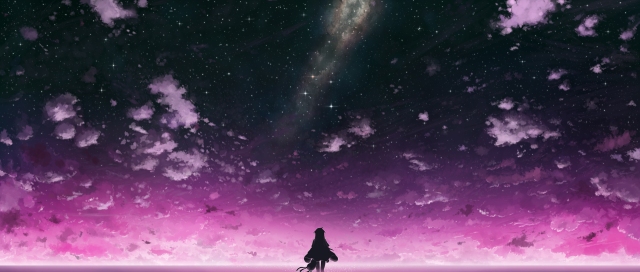
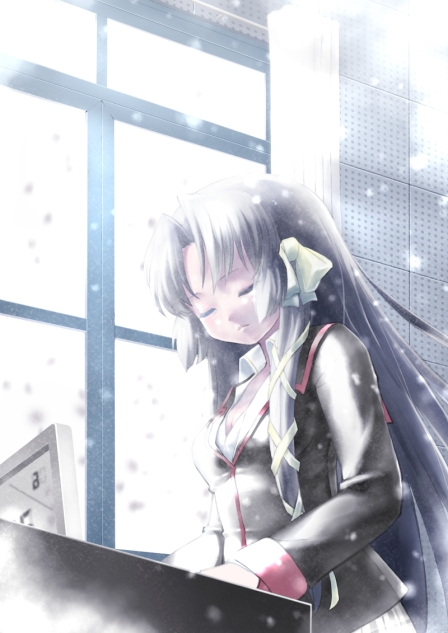
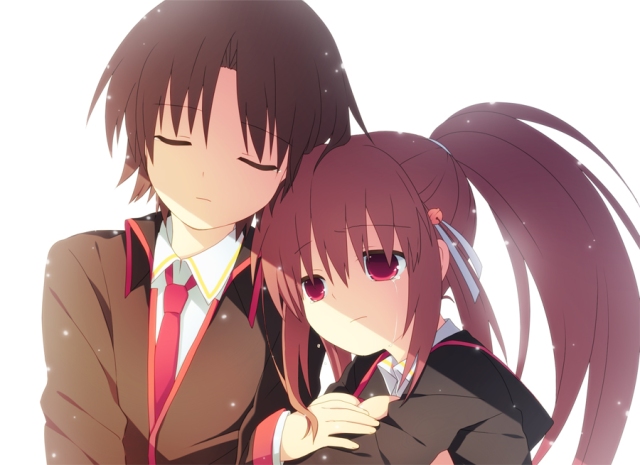
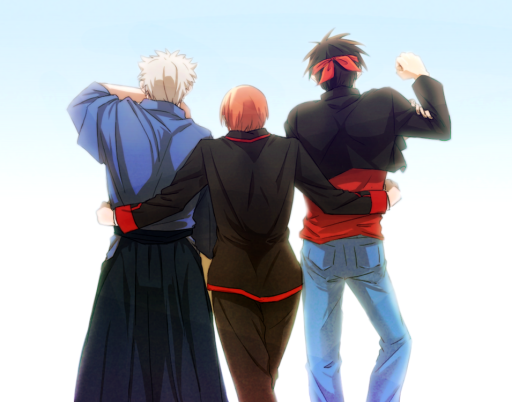
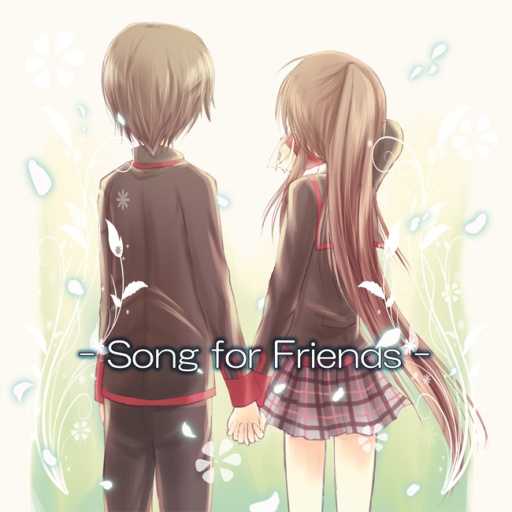
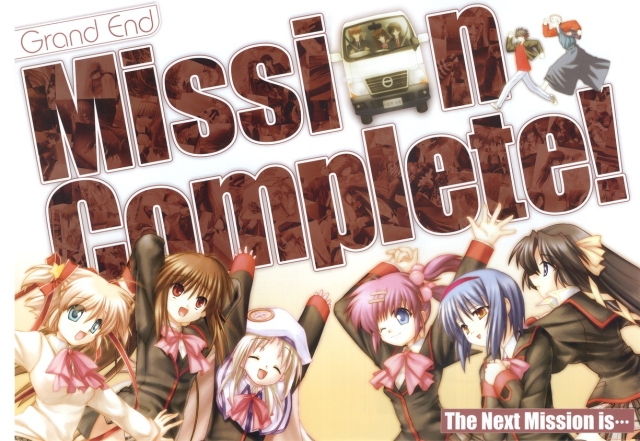
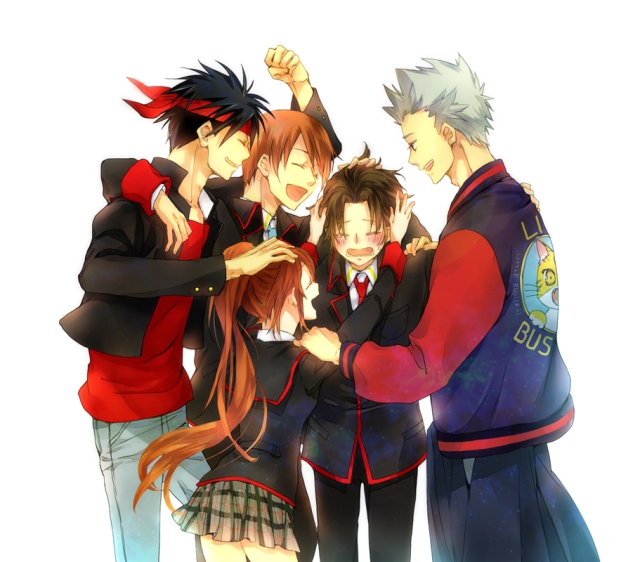
A marvelous reflection. It really reminded me of how I was playing the VN, how I felt, what I thought. I especially enjoyed reading your conclusion as to “What is the Little Busters?” ^^
Good round up of the story. Many times I have problems explaining my friends what Little Busters! is about. It’s about love, friendship, becoming stronger, comedy, tragedy, and so many things that it’s impossible to make a short explanation. Thanks to you I realized many things about the story I hadn’t thought of, like why Komari is the only route you can repeat, or that Kengo’s love succeeded in her suicide attempt in the real world. I truly share a very similar experience as you when I read the “bad ending” of Refrain, it broke me up, and I didn’t like it was skipped on the anime (they decided to make the anime a continuous story when the novel is about a story that repeats itself many times, so no multiple endings), and I literally jumped of joy during the credits of the true ending. Having read Rewrite first, I thought the endings were somehow weak in that game, but Refrain was the most badass ending that Key has made IMHO.